Raising Backyard Chickens for Eggs: A Beginner's Guide (2025)

I'm writing this in April 2025, and raising backyard chickens is certainly getting more and more popular. Earlier this yeat, my dad and I had to wait in line for two hours at our local animal feed store to buy another batch of chicks to raise. Watching the little fluff balls grow into mini velociraptors certainly is a rewarding experience. They require daily attention, but not constant attention. They poop all the time, but the poop makes great compost. They can be noisy when frolicking all over the place, but their chirping noises are rather therapeutic and soul-lifting. Anyway, this is a quick guide to some things you need to know in order to get started with your own (mini?) flock.
Getting Started with Backyard Chickens
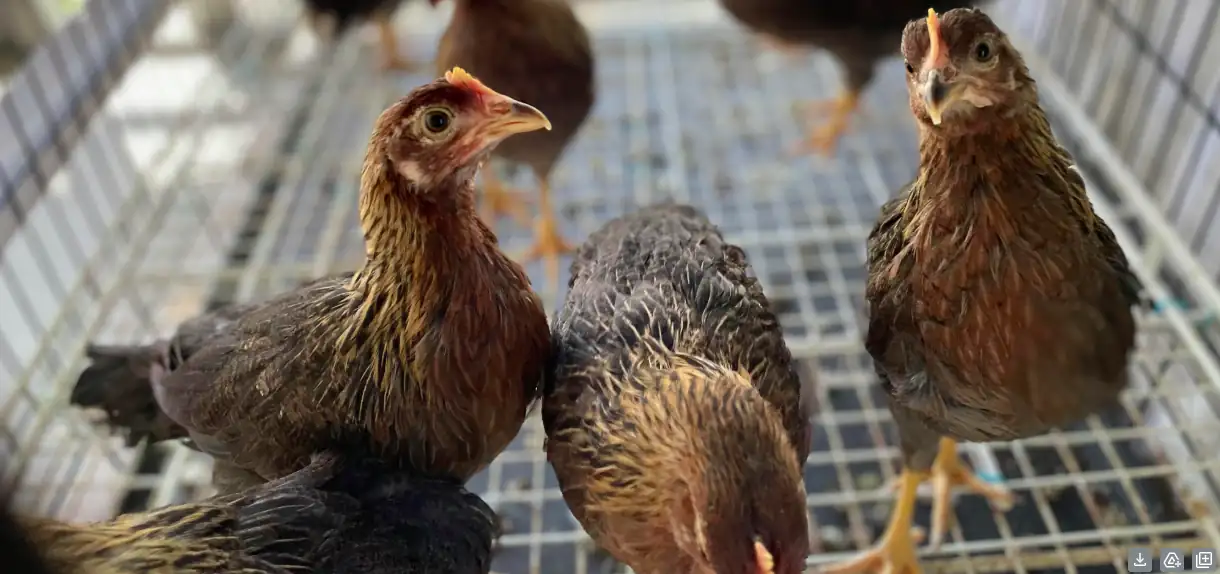
There are a few things to consider before you get started. First, check your local ordinances, such as zoning laws and HOA regulations. Some municipalities have restrictions on the number of chickens you can keep, usually up to four hens for residential neighborhoods (roosters are likely prohibited due to the noise but check your zoning laws), or even ban them altogether. Many cities have regulations giving residential households the right to own backyard chickens. Clermont, Florida for example, recently adopted new laws to allow residents of single family homes to own up to five hens, with the submission of an application form.
Chickens need between 3 to 5 square feet of coop space each, depending on breed (i.e. bantams that lay smaller eggs, vs large breeds such as buff orpingtons) and how much space they get to run around in outside their coop. Having chickens will become a part of your daily (or perhaps weekly) routine, so make sure you have the following:
- A coop to keep them safe in, with a nesting and brooding area at least
- Ideally a place for them to run around
- An incubator (if starting from egg)
- Temperature control via heat lamp or heating pad (95 down to 75 degrees Fahrenheit for the first month if starting from chick)
- Water (available constantly)
- Food (store bought or DIY)
Choosing the Right Chicken Breeds
Choosing chicken breeds is a fun part of the process. Different chicken breeds have different personalities, egg laying capabilities, and appearance. Since you're primarily interested in eggs, consider breeds like Leghorns or Rhode Island Reds. These hens lay eggs pretty reliably, offering you those fresh eggs you're looking for. If you want chickens that are also good for meat, look into breeds like Plymouth Rocks or Orpingtons. Or maybe you just want some pretty birds in your backyard. Silkies and Polish chickens are more ornamental, and make charming additions to your flock with their fluffiness. Don't be afraid to do your research and find the perfect fit for your needs!
Deciding Between Hatching Eggs, Chicks or Laying Hens
There are three main ways to start your backyard chicken flock:
- hatching eggs
- buying baby chicks
- buying ready to lay or laying hens
Hatching eggs requires an incubator and a bit of patience. Purchasing chicks is a more common option (my local Tractor supply sells out within a day or two of getting them), and can be more rewarding if you want the bonding experience with the little fluff balls from a young age. Getting laying hens is the quickest way to get eggs. Each option has its pros and cons, but either way you'll end up needing the things listed in the previous section.
Where to get laying eggs, chicks, or chickens?

You've come to the right place, since this site is dedicated to helping you find live poultry providers near you. There are several options, and you can use our map to find one near you, a source you want to buy from anywhere in the country (2025 April update: I'm updating this site daily, so check back for more states. There's tons of locations to add, and I've been adding them state by state). Please use the contact form to request your state to be added earlier if results aren't available yet in your area.
- Local Tractor Supply, or other animal feed store
- Hatcheries
- Farms
- Craigslist
- Facebook marketplace
There are pros and cons of buying from local retailers vs hatcheries and farms. Visiting retailers in store can be the fastest way to buy chicks, but usually don't give you an option to choose what breed you're getting, and you'll have to call ahead of time to ask about breeds and estimated time of arrival so that you can get there before the chicks are sold out. From personal experience, they likely can't or won't give you a call back when the chicks arrive. There's been very high demand with egg prices fluctuating and the bird flu going on. Tractor supply does sell laying age hens and chicks online as well, though not breed specified. In this case, you would order online, and go to a nearby USPS location for pickup.
Hatcheries, on the other hand, usually have a lot more options available, including hatching eggs if you want to start from scratch. There might be a higher minimum order limit though (at least 10, for example), compared to retailers. Some hatcheries and farms do sell laying age hens online. Call ahead to see what breeds they currently have in stock, and whether it's local pickup only or if shipping is available.
On Craigslist and Facebook marketplace, you can find individuals raising and selling chicks as a temporary or homestead operation, or are giving away their flock due to certain reasons. I've picked up two adult hens this way, but have found that they're probably not the age that the previous owner said they were (only one has started laying, and not very often). Acquire these at your own risk, and be careful of scammers!
Setting Up Your Chicken Coop
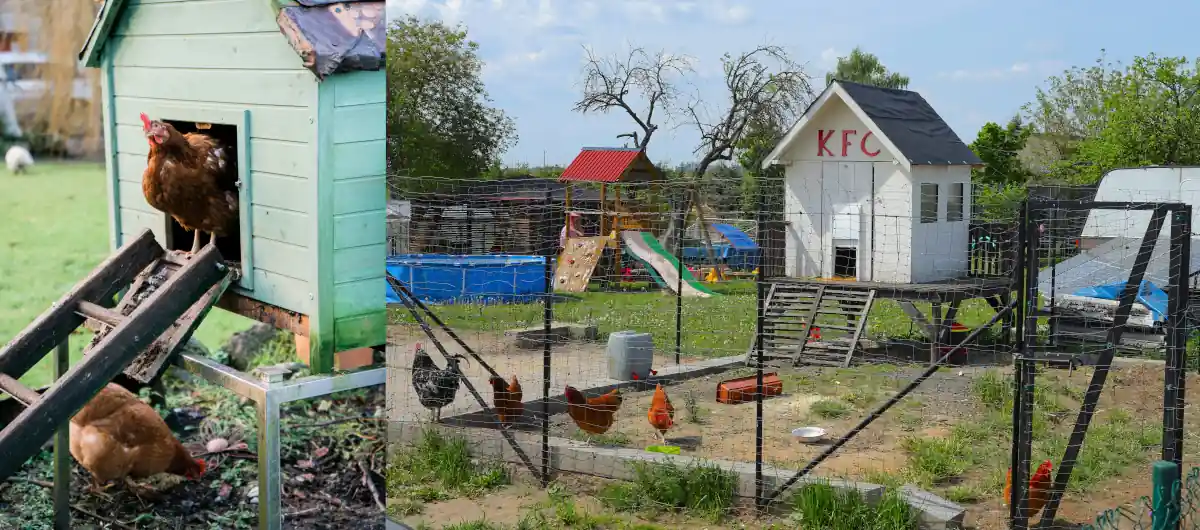
Coop Design: Essential Features of a Backyard Chicken Coop
When you raise chickens, your chicken coop is more than just a house; it's their sanctuary. Their daily routine involves the following:
- leaving the coop when the sun comes up to run around and forage
- pooping, self cleaning, eating throughout the day
- sitting in the nesting box in the coop when egg-ready
- occasionally going broody (constantly trying to incubate eggs)
- going back to the coop around dusk, and spending the night on a roosting bar
So knowing their daily routine, a well-designed coop should have the following:
- a sturdy enclosed exterior for protection against predators (no large gaps)
- a roosting bar
- a tray under the bar to collect poop/droppings
- a nesting box per 4-5 hens, lined with soft material such as hay, straw, pine shavings, etc.
- food and water feeder
- a run area (a few feet of space per chicken)
- ideally a dust bath (for self cleaning)
It's important to note that the roosting bar should be placed higher than the nesting box height, since chickens like to stay at the highest area in the coop at night. Otherwise, they might end up staying in the nesting boxes overnight and pooping in them. Place the nest boxes in a dark, quiet area of the coop to provide privacy for your hens. Regularly clean the nest boxes to maintain hygiene and prevent pest infestations. The chickens will generally keep themselves clean when they can. If using chicken wire, bury it at least 12 inches deep around the perimeter of the chicken run to deter digging predators.
Caring for Your Chickens
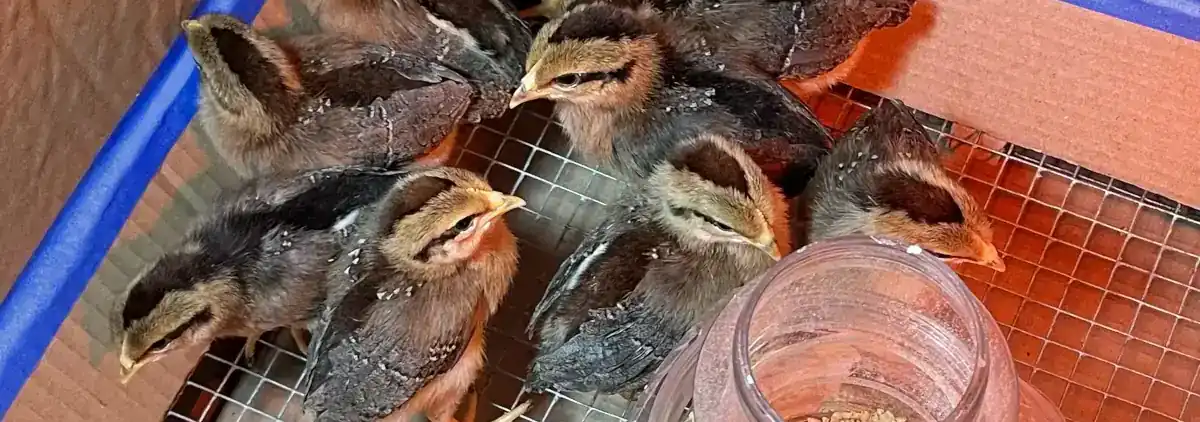
Feeding Your Chickens: What to Know
Chicken feed comes in different kinds, such as pellets, crumbles, and mash. Choose a feed that's appropriate for the age of your chickens. Baby chicks need a special starter feed, while laying hens require a feed that's high in calcium. Here's a basic schedule:
- chicks (1st 24 hrs): fresh water only
- chicks (day 1 - 2 months): 1-2 ounces of starter feed per chick per day
- pullets (around 2 months old): 3 ounces of grower feed each per day
- adult hens (4 months - 4.5 months old): 4 ounces of layer feed each, per day
The best practice is to keep the feed and fresh water available at all times, so that they can eat and drink throughout the day as needed. You can start to gauge their eating patterns and how much food they eat with time. Also feel free to supplement their diet with treats like fruits, vegetables, and mealworms, but avoid giving them too much, as it can disrupt their nutritional balance.
Maintaining a Clean Environment for Happy Chickens
Raising backyard chickens successfully hinges on maintaining a clean environment. A clean chicken coop prevents disease and promotes chicken health. Regularly clean the coop, removing droppings and soiled bedding. Replace the bedding with fresh material to prevent the buildup of ammonia. Provide your chickens with a dust bath area, as this helps them keep their feathers clean and free of parasites. Regularly clean and sanitize feeders and waterers to prevent the spread of disease.
Raising Baby Chicks: From Chick to Hen
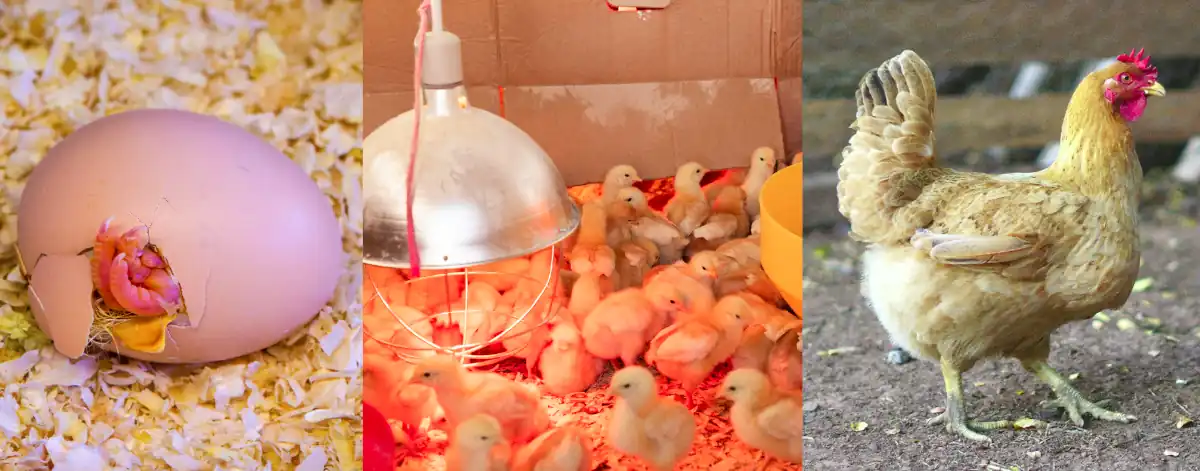
The Hatching Process: From Eggs to Chicks
The journey of raising baby chicks begins with the fascinating process of hatching eggs. If you choose to incubate eggs, you'll need an incubator that maintains a consistent temperature and humidity level. Turn the eggs several times a day to prevent the chick from sticking to the shell. After about 21 days, you'll witness the miracle of life as the baby chicks peck their way out of their shells. This can be a stressful time for the new chicks, so try to give them space. It's essential to let the chicks hatch on their own without assistance unless they're clearly struggling.
How to Care for Baby Chicks
Once your baby chicks have hatched, they'll need a warm, safe enclosure (a brooder) to thrive. Start with a temperature of 95 degrees Fahrenheit, and drop it by five degrees each week until 75 degrees. Then make sure to keep the environment above 55 degrees. Make sure to provide a constant supply of fresh water and chick starter feed. Keep the brooder clean and dry to prevent disease. Observe your baby chicks closely for any signs of illness, such as lethargy or diarrhea. Again, raising baby chicks is such a rewarding experience, but it requires dedication and attention to detail.
Integrating Chicks into Your Backyard Flock: There is A Hierarchy!
Integrating your baby chicks into your existing backyard flock requires patience and careful planning. Young hens (pullets) should be fully feathered and close to the size of your smallest adult hen before introducing them to the chicken coop. Start by allowing the new hens to see the adult chickens through a chicken wire barrier for several days. Supervise their first few interactions closely, and be prepared to intervene if you see any aggression. It's common for the older hens to assert their dominance, but it shouldn't escalate into serious harm. Provide plenty of space and resources to minimize competition. A natural "pecking order" will be established within the flock, based on age and size. Guess that's where the term came from. You can observe them over time, and come to the rescue if you notice any excessive "bullying."
Ensuring the Health and Safety of Your Flock

Common Health Issues and Preventative Measures
Chicken health is crucial for a thriving backyard flock. Here are some known issues:
- mites, lice, and worms
- feather loss (not from regular molting), scratching, or pale combs
- respiratory illnesses
- lash egg / soft egg / egg bound (less common, due to calcium-low diet and/or inflammation)
As expected, these issues can largely be prevented by:
- vaccination (depends on purchase source if not starting from egg)
- proper ventilation in the chicken coop
- weekly basic cleaning of coop, deep clean every 6 months
- balanced diet (protein, fats, vitamins, minerals, and grains)
Recognizing Signs of Stress in Your Chickens
Stress can negatively impact egg laying and overall chicken health. Learn to recognize signs of stress in your backyard flock, such as fewer eggs, feather pecking, or changes in behavior. Overcrowding, poor ventilation, and inadequate nutrition can all contribute to stress. Providing enough space, fresh air, and a balanced diet are essential for raising chickens 101 and minimizing stress. Ensure your chickens have access to a dust bath to promote natural grooming behaviors and reduce stress. Regularly monitor your chickens for any signs of distress, and address any potential stressors promptly to maintain a happy and healthy flock. If a chicken needs help, be prepared to give it!
Maximizing Egg Production
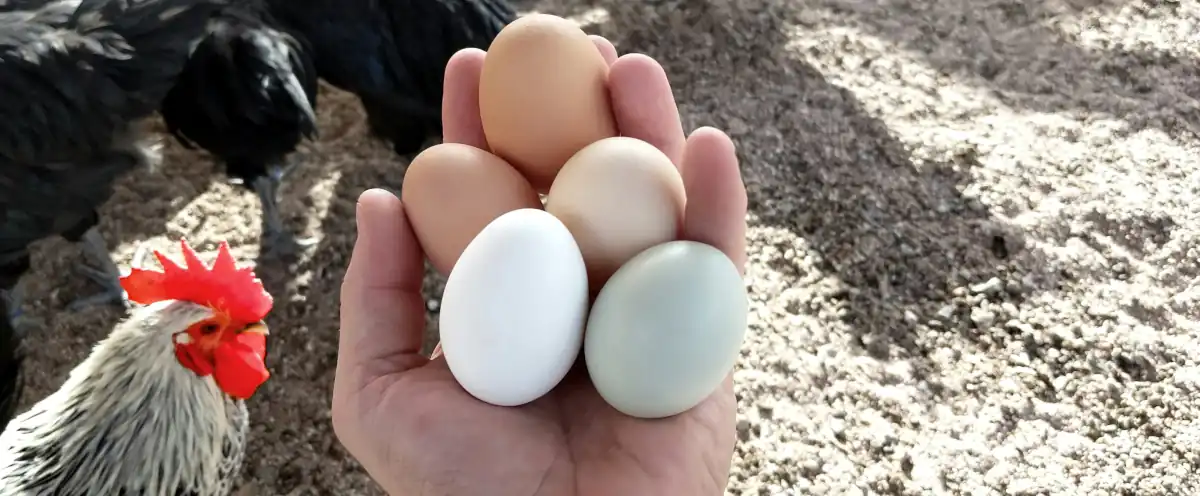
Best Practices for Encouraging Laying Hens
If you raise chickens for eggs, optimizing egg output is a top priority. Provide your laying hens with a high-quality chicken feed specifically formulated for laying hens. Maintain a consistent light source (natural sunlight is best), as light stimulates egg production. Aim to provide them with at least 14-16 hours of light per day, especially during the winter months. Due to the cold and having less natural sunlight, expect lower egg production during the winter months. Provide comfortable nest boxes with clean bedding to encourage hens to lay eggs. Collect eggs regularly to prevent broodiness, which can stop hens from laying (they'll only want to incubate). If a nesting box stays unused, try putting a wooden egg in it to help hens cozy up to it. The egg cycle for a chicken takes around a full day (24 - 26 hours), and at peak laying capability the process should start again within 30 minutes of laying. Most chicken breeds will give you between 200 to 300 eggs per year.
Understanding the Lifespan of Your Backyard Chickens
The lifespan of your backyard chicken depends on several factors, including breed, chicken care, and environment. On average, backyard chickens can live for 5-10 years. Laying hens typically reach their peak egg production within the first two years, with egg production gradually declining as they age. Even after their prime laying years, your chickens can still provide companionship and enjoyment. Continue providing your aging chickens with proper care, to lengthen their lifespan and maintain the best possible egg production at each stage of life. At the same time, you can phase in new members of the flock by raising more chicks.